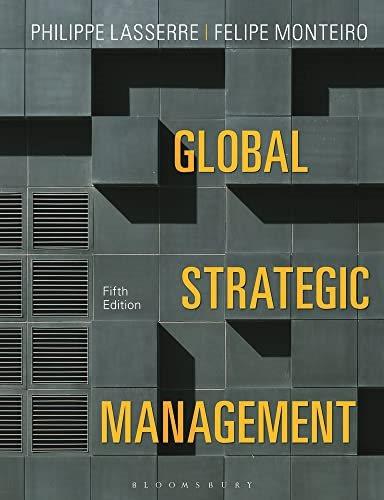Founded in 1987 by Marco Stefanini in Brazil, Stefanini became one of the largest ICT service providers
Question:
Founded in 1987 by Marco Stefanini in Brazil, Stefanini became one of the largest ICT service providers in Latin America. However, unlike most Latin American companies, Stefanini focused on international markets, making it a truly global company. By 2020, it was a $1 billion global provider of technology services, present in 41 countries, with 25,000 employees operating in 35 languages and providing 80 solutions working in 20 industries.20 The company offered a wide range of IT services, following the ‘one-stop-shop’ model. Through its Digital Services, Stefanini provided strategy and technology consulting, helping customers innovate and transform their business models, and adapt them to the market context of the digital economy.
These included:
● Business Process Outsourcing (BPO) outsourcing operational processes such as purchasing and payroll.
● IT Outsourcing (ITO) providing IT support services onsite.
● Application Development Centres that centralized the development and integration of software according to client needs.
● Selling licences and providing maintenance to large global software and hardware partners such as IBM, SAP, Oracle and Dell. Over the thirty-year period, with no external investment, Marco had taken on global competitors such as IBM, Tata Consultancy Services (TCS) and Accenture and had to contend with the vicissitudes of Brazil, a complex home base.
History Stefanini IT Solutions’ first partner was IBM, a company that at the time was undergoing issues with its mainframe training. Marco expanded operations, offering training services to other companies.
In 1989, as the company started to take off, Brazil was undergoing turbulent times economically. In the 1990s, the ‘Collor Plan’ blocked all liquidity and the savings of the population in an attempt to control inflation. Marco reduced operations and looked for new opportunities – outsourcing applications and technical support professionals.
By 1993, Stefanini had reached its first million billing and developed its first independent software factory in Brazil. In 1994, as demand for application development and maintenance accelerated, ERPs
(Enterprise Resource Planning) emerged that threatened IT outsourcing services because they were standardized, low maintenance and did not require new development. Marco saw it as an opportunity
– the person who carried out the services needed to be better qualified, therefore the price of the service could be up to three times higher. In addition, ERPs required new technical services such as infrastructure.
As the internet was widely adopted by business and society in Brazil and competition increased, Marco expanded internationally, beginning in 1995 with its first acquisition in Argentina, followed by further expansion in Latin America in 2000.
Stefanini continued to expand, moving into the US the following year and setting up operations in Italy and Portugal in 2003. In 2005 a London hub was created, and the first unit was created in India the following year.
By 2009, Stefanini had a portfolio of global customers, including J&J, GE and Caterpillar. CIOs were pleased with its service delivery, helping its entry into new markets. Stefanini continued to expand, acquiring its largest company in 2011: Tech Team. This was followed by the first non-IT company the following year, Orbitall. The same year, Stefanini launched its global brand ‘our DNA Powering Your Business’. The company continued to acquire companies throughout the world with acquisitions and joint ventures in cyber security and Internet of Things (IoT), among others.
Despite the company’s success and growth, Marco realized that the industry was transforming radically; what had been successful in the past would not work in the future. The effects of the digital revolution applied to many of Stefanini’s activities. He knew the company had to evolve the supply of products and services. Stefanini’s sales and delivery models would also need to be strengthened. Stefanini was creating a global ecosystem that enhanced its ability to create unique solutions. It was also building digital business solutions in workplace infrastructure and applications services, among others.
There were several options for further geographic expansion. Stefanini could acquire more companies worldwide as it had in the past or form strategic alliances with local or multinational technology companies. However, some geographies could prove more challenging. Did it want to target the US where there were many customers but fierce competition? Should Stefanini pursue a similar strategy to Johnson & Johnson where they had taken its successful Brazilian operations and worked backwards helping the company in other ways? Another option was to bolster its presences in other countries, for example key European markets such as the UK where it had a small market share. Stefanini could expand through joint ventures and/or create strategic alliances with local or multinational technology firms. Its hubs and offices throughout the world could facilitate this. Ultimately, Stefanini needed to decide which ‘geographical battles’ it should fight.
Questions:
1 What are the factors that have made Stefanini so successful over the company’s thirty-year history?
2 How and why did they expand globally?
3 How has technology impacted the business over the years?
Step by Step Answer:

Global Strategic Management
ISBN: 9781350932968
5th Edition
Authors: Philippe Lasserre, Felipe Monteiro





